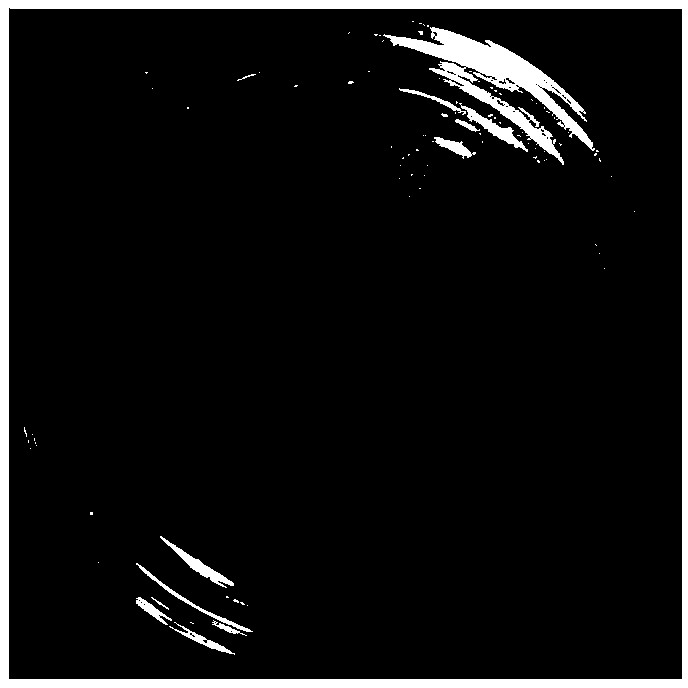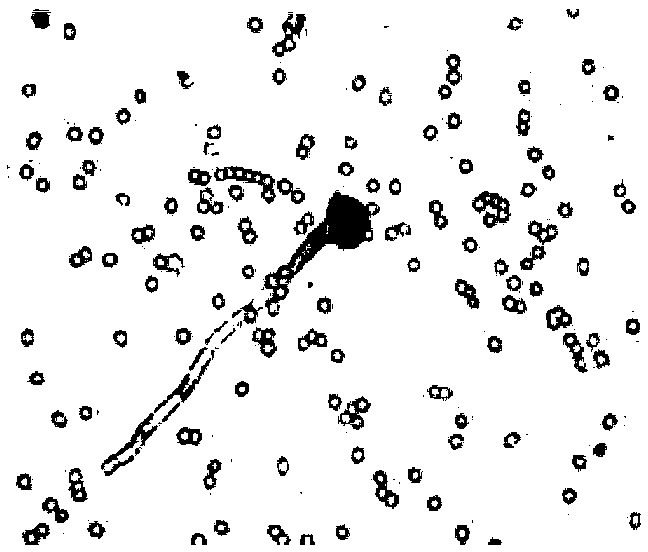Alkaline-tolerant and halophilic aspergillus strain and application thereof in environmental management
A technology of Aspergillus grisea and strains, applied in application, fungi, other chemical processes, etc., can solve problems such as accelerating straw, and achieve the effect of efficient degradation
- Summary
- Abstract
- Description
- Claims
- Application Information
AI Technical Summary
Problems solved by technology
Method used
Image
Examples
Embodiment 1
[0017] Example 1, Isolation and identification of halophilic and alkali-resistant bacterial strains
[0018] Isolation of the strains: The soil samples for the isolation of the strains were from Zhenlai County, Jilin Province. Select the land that has been desolate for many years and is highly salinized, take the soil below 2cm of the soil surface, put it into a sterilized glass bottle, and bring it back to the laboratory for later use. Using the dilution coating method, the diluted and clarified soil supernatant was spread on the PDA medium (pH=10) supplemented with NaCl to 250.0g / L and cultured for 4 days. After three rounds of screening, a halophilic and resistant Alkaline fungal strains (the alkali-tolerant halophilic Aspergillus cinerea strain number of the present invention is CGMCC6025).
[0019] Morphological identification of strains: Inoculate the screened halophilic and alkali-resistant strains on Chase agar medium, culture at 25°C for one week, observe the colony ...
Embodiment 2
[0020] Embodiment 2, bacterial strain Aspergillus cinerea JL halophilicity, salt tolerance and optimum salt concentration identification
[0021] The PDA medium (pH 7.0) with gradient NaCl content was prepared, and its salt concentration (mass fraction) was increased from 1% to 31% (saturation concentration), with an increase of 2% at each level. The PDA without NaCl was used as the control. Inoculate an equal amount of strains in the center of the culture medium, culture at 25°C for 1 week. It was found that the strain did not grow on the medium without NaCl (growth was extremely slow), and the growth was relatively slow at the concentration of 1-5%; the growth of the strain was accelerated at the concentration of 5%-19%, but in the range of 9-19% The growth rate slows down, and the size of the colony is similar; the growth of the strain slows down sharply at the concentration of 21-27%, and the bacteria hardly grows at the concentration of 29-31%. Therefore, the strain is a ...
Embodiment 3
[0023] Embodiment 3, bacterial strain Aspergillus gray aeruginosa JL growth pH measurement
[0024] Prepare an acid-base gradient PDA medium with a pH of 1.0-13.0, add NaCl to a final concentration (mass fraction) of 9%, inoculate, and record the growth of the strain after culturing at 25°C for 1 week. The study found that the strain can grow at pH 3-11, but grows faster at pH 5-9, and can grow at pH 10-12, but the growth rate is significantly slower. Therefore, the strain is a salt-tolerant fungus.
[0025] In order to determine the optimum pH range for the growth of the strain, use the above pH gradient to further culture with PD liquid medium, shake culture at 25°C for 1 week, collect mycelia by centrifugation, rinse with deionized water for 4 times, and dry at 105°C , to compare the dry weight of mycelia. The bacterial strain has the largest dry weight in the range of pH6-8, therefore, the optimum pH range of the bacterial strain is 6-8.
PUM
 Login to View More
Login to View More Abstract
Description
Claims
Application Information
 Login to View More
Login to View More - R&D
- Intellectual Property
- Life Sciences
- Materials
- Tech Scout
- Unparalleled Data Quality
- Higher Quality Content
- 60% Fewer Hallucinations
Browse by: Latest US Patents, China's latest patents, Technical Efficacy Thesaurus, Application Domain, Technology Topic, Popular Technical Reports.
© 2025 PatSnap. All rights reserved.Legal|Privacy policy|Modern Slavery Act Transparency Statement|Sitemap|About US| Contact US: help@patsnap.com



